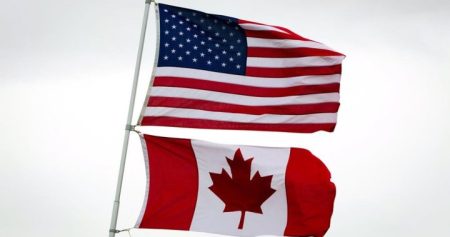The Bank of Canada is expected to deliver a third consecutive interest rate cut as inflationary forces cool on both sides of the Canada-United States border. The U.S. Federal Reserve is also expected to start its own easing cycle later in the month, which will help set up the Bank of Canada for more rate cuts. Both central banks are likely to deliver quarter-point rate cuts in September, with the Fed announcing its decision two weeks after the Bank of Canada. Inflation has been cooling for Canadians amidst mild economic growth, allowing the Bank of Canada to start easing its policy rate from elevated levels in June.
Concerns about inflation reigniting were dampened by a downbeat July jobs report in the U.S., leading to expectations of rate cuts from the Fed. Fed chair Jerome Powell confirmed a policy shift was imminent in late August, likely reassuring Bank of Canada governor Tiff Macklem. Despite embarking on an easing cycle before the Fed, Macklem may have had a limited runway ahead of him. Eventually, the Bank of Canada will need the Federal Reserve to start easing policy to prevent its own rate cuts from being stopped.
The exchange rate between the Canadian and U.S. dollars is heavily influenced by policy rates on both sides of the border. A larger divergence between rates could hurt the Canadian dollar compared to the American dollar, making American imports more expensive for Canadian businesses and potentially refueling inflation. The CAD-USD exchange rate has appreciated in the past month due to growing expectations of the Fed joining the Bank of Canada in rate cuts, as well as the resilient Canadian economy and oil prices. There is still uncertainty about the rate path in the U.S. after September.
Inflation has continued to cool towards the Bank of Canada’s two per cent target, and the softening economic background indicates that inflation risks are largely contained. The central bank has the ability to continue reducing interest rates without reigniting inflation. The U.S. Fed will need to be more cautious due to risks in the U.S., including the upcoming presidential election. The path forward for the Bank of Canada is anticipated to include slow, steady rate cuts into the end of 2025. Despite risks such as a federal election and supply chain concerns, the Bank of Canada is expected to continue lowering interest rates gradually.
While economists and market watchers expect interest rates in Canada to continue falling, it is unlikely that the Bank of Canada will make large rate cuts. Anything larger than a quarter of a percentage point would send the wrong message to markets and lead to more aggressive bets on rate cuts. The Bank of Canada’s message has been that the easing cycle will not be as rapid as the previous rate hikes. The economy is not in a dire enough situation to warrant steep rate cuts, and slow and steady adjustments are expected. The unemployment rate is expected to rise slightly but recover in the coming years as interest rates ease and spending picks up.













